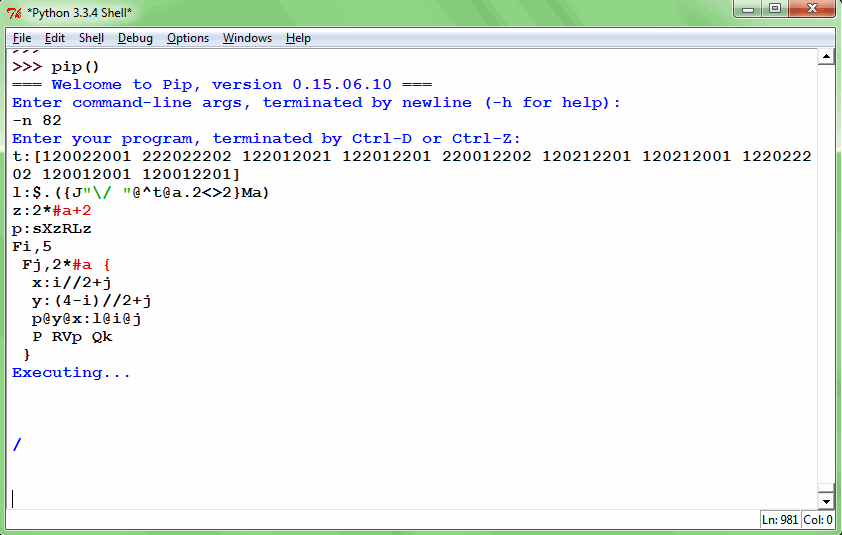100
19
Write a program that takes in a non-empty string of the digits 0 through 9 and prints how they would be shown on a seven-segment display using slashes (/, \).
These are the precise digit shapes:
/\
\ \
\/
\
\
/\
/
\/
/\
/\
/
\
\/\
/
\/\
/
/
\/\
\/
/\
\
/\
\/\
\/
/\
\/\
/
When one digit occurs after another, they are chained diagonally up and to the right, with a diagonal space in between. So, for example, 203 would become this:
/\
/\
/\ /
\ \
/\ \/
/
\/
Note that the 1 character takes up the same amount of space as the others. The two lines of the 1 are on the right side of the display, not the left.
So 159114 would become this:
\
\/\
\
\
\
\
/\
\/\
/ /
\/\
\ /
\
There may be any amount and combination of leading/trailing newlines or spaces in the output as long as the digits are in the correct position with respect to one another.
So for 159114, this would also be valid:
\
\/\
\
\
\
\
/\
\/\
/ /
\/\
\ /
\
Take input from stdin or the command line, or write a function that takes in a string. Print the result to stdout or you can return it as a string if you write a function.
Any non-empty string of the digits 0 through 9 should work, including single digits strings (e.g. 8) and strings with leading zeros (e.g. in 007, the zeros do need to be printed).
The shortest code in bytes wins.

42Totally offtopic: This looks awesome! – Martijn – 10 years ago
4This is really really cool. However, I'm not sure kolmogorov-complexity is appropriate for this question - I thought that that required a constant output? – alexander-brett – 10 years ago
1@alexander-brett iirc that was the original intention, however, more recently it's been used for problems where the majority of the code is probably going to be hardcoding. – undergroundmonorail – 10 years ago
This made me go like... WOW! just WOW! – Renae Lider – 10 years ago
Question: Do we need to handle empty strings or strings with non-digit characters? – frederick – 10 years ago
@frederick No. The program can error or do anything else in those cases. – Calvin's Hobbies – 10 years ago
@Calvin'sHobbies Okay, thanks. – frederick – 10 years ago
Now I'm curious if this task traces back to numwarp.b or if someone else just had the same idea. :) – Daniel Cristofani – 10 years ago
@DanielCristofani No, I'm not sure what that is. (And this is hardly my first question involving slashes ;) )
– Calvin's Hobbies – 10 years agoCool. Independent invention, then--numwarp.b is the brainfuck program I wrote to do this same thing. – Daniel Cristofani – 10 years ago
[tag:language-request] a language which is TC, but can only output like this. – Rohan Jhunjhunwala – 9 years ago